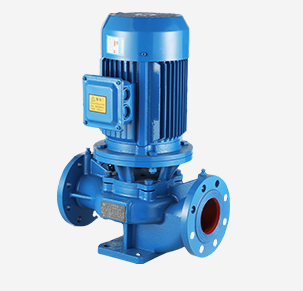Japanese
- Afrikaans
- Albanian
- Amharic
- Arabic
- Armenian
- Azerbaijani
- Basque
- Belarusian
- Bengali
- Bosnian
- Bulgarian
- Catalan
- Cebuano
- Corsican
- Croatian
- Czech
- Danish
- Dutch
- English
- Esperanto
- Estonian
- Finnish
- French
- Frisian
- Galician
- Georgian
- German
- Greek
- Gujarati
- Haitian Creole
- hausa
- hawaiian
- Hebrew
- Hindi
- Miao
- Hungarian
- Icelandic
- igbo
- Indonesian
- irish
- Italian
- Japanese
- Javanese
- Kannada
- kazakh
- Khmer
- Rwandese
- Korean
- Kurdish
- Kyrgyz
- Lao
- Latin
- Latvian
- Lithuanian
- Luxembourgish
- Macedonian
- Malgashi
- Malay
- Malayalam
- Maltese
- Maori
- Marathi
- Mongolian
- Myanmar
- Nepali
- Norwegian
- Norwegian
- Occitan
- Pashto
- Persian
- Polish
- Portuguese
- Punjabi
- Romanian
- Russian
- Samoan
- Scottish Gaelic
- Serbian
- Sesotho
- Shona
- Sindhi
- Sinhala
- Slovak
- Slovenian
- Somali
- Spanish
- Sundanese
- Swahili
- Swedish
- Tagalog
- Tajik
- Tamil
- Tatar
- Telugu
- Thai
- Turkish
- Turkmen
- Ukrainian
- Urdu
- Uighur
- Uzbek
- Vietnamese
- Welsh
- Bantu
- Yiddish
- Yoruba
- Zulu
Telephone: +86 13120555503
Email: frank@cypump.com
12月 . 04, 2024 21:47 Back to list
submersible pump for sludge
Submersible Pumps for Sludge An Essential Tool for Efficient Waste Management
Submersible pumps are critical components in various applications, particularly in wastewater management and sludge handling. These pumps are designed to operate while submerged in the fluid they are pumping, making them an ideal choice for environments where traditional pumps may struggle. Their unique structure and operational capabilities enable them to efficiently handle thick, viscous materials such as sludge, which consists of solid waste and water typically generated from industrial processes, sewage treatment plants, and other water treatment facilities.
Understanding Sludge
Sludge is a semi-solid slurry full of organic or inorganic matter that is a by-product of various treatments, including rainfall runoff, sewage systems, and industrial processes. Proper management of sludge is crucial to prevent environmental contamination, optimize landfill use, and recover valuable resources. The properties of sludge can vary significantly depending on the source, leading to challenges in its handling and disposal. In this context, submersible pumps come into play as effective tools for transporting sludge to treatment facilities or disposal sites.
Advantages of Submersible Pumps for Sludge
Submersible pumps offer several advantages over more traditional pumping methods
1. Efficient Design Being submerged allows these pumps to take advantage of the hydrostatic pressure of the surrounding liquid, which enhances their efficiency, especially in deep pits or tanks. This design eliminates the need for long suction lines and associated issues such as air entrainment.
2. Compact and Space-Saving Submersible pumps typically occupy less space than surface-mounted pumps, making them ideal for areas where space is limited. This compactness allows for better site utilization without sacrificing pumping performance.
3. Versatility in Applications They can handle various sludge types, including those with high solid content, making them apt for use in sewage treatment plants, construction sites, and mining operations. Their adaptability to different sludge conditions is a significant advantage in diverse industries.
4. Reduced Noise and Vibration Since they operate underwater, submersible pumps generate less noise and vibration compared to surface pumps. This reduction can improve working conditions in treatment facilities and other environments where noise levels must be managed.
submersible pump for sludge

5. Lower Maintenance Costs Submersible pumps are designed for longevity, often requiring less frequent maintenance due to their hermetically sealed motors that prevent moisture ingress. Regular maintenance checks can ensure their reliability and efficiency, contributing to lower operational costs over time.
Selecting the Right Submersible Pump
When choosing a submersible pump for sludge handling, several factors must be considered
1. Pump Capacity It is essential to select a pump with the right capacity to match the inflow rate of sludge. Under-sized pumps can lead to overflow, while over-sized units may waste energy.
2. Sludge Characteristics The composition of the sludge (solid content, viscosity, and corrosiveness) influences pump selection. Specific pumps are designed to handle thicker or more abrasive materials.
3. Depth of Installation Submersible pumps are available in different configurations depending on the installation depth. Selecting a pump capable of operating at the required depth is crucial for successful operation.
4. Power Source Depending on the installation location, choose pumps compatible with the available power source, be it electric, hydraulic, or pneumatic.
5. Safety Features Opt for pumps with built-in safety features to protect against potential hazards, including thermal overload protection and shut-off features in case of mechanical failure.
Conclusion
Submersible pumps play an invaluable role in managing sludge in various industrial and municipal applications. Their efficient, compact design makes them a practical solution for transporting sludge while minimizing environmental impact. By carefully selecting the right pump based on specific needs and conditions, organizations can improve their sludge management processes, ensuring efficient operations and compliance with environmental regulations. As technology advances, the continued development of submersible pumps promises to offer even greater efficiency and performance for wastewater management.
-
Heavy-Duty Mining Sludge Pumps - Wear-Resistant Slurry Handling
NewsAug.02,2025
-
Horizontal Split Case Pump with GPT-4 Turbo | High Efficiency
NewsAug.01,2025
-
ISG Series Pipeline Pump - Chi Yuan Pumps | High Efficiency, Durable Design
NewsAug.01,2025
-
Advanced Flue Gas Desulfurization Pump with GPT-4 Turbo | Durable & Efficient
NewsJul.31,2025
-
ISG Series Vertical Pipeline Pump - Chi Yuan Pumps | Advanced Hydraulic Design&Durable Construction
NewsJul.31,2025
-
ISG Series Vertical Pipeline Pump - Chi Yuan Pumps | Energy Efficient & Low Noise
NewsJul.31,2025










